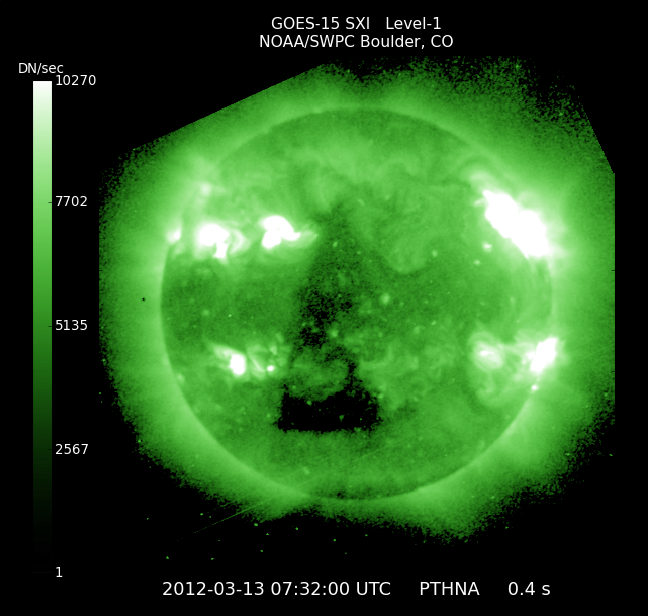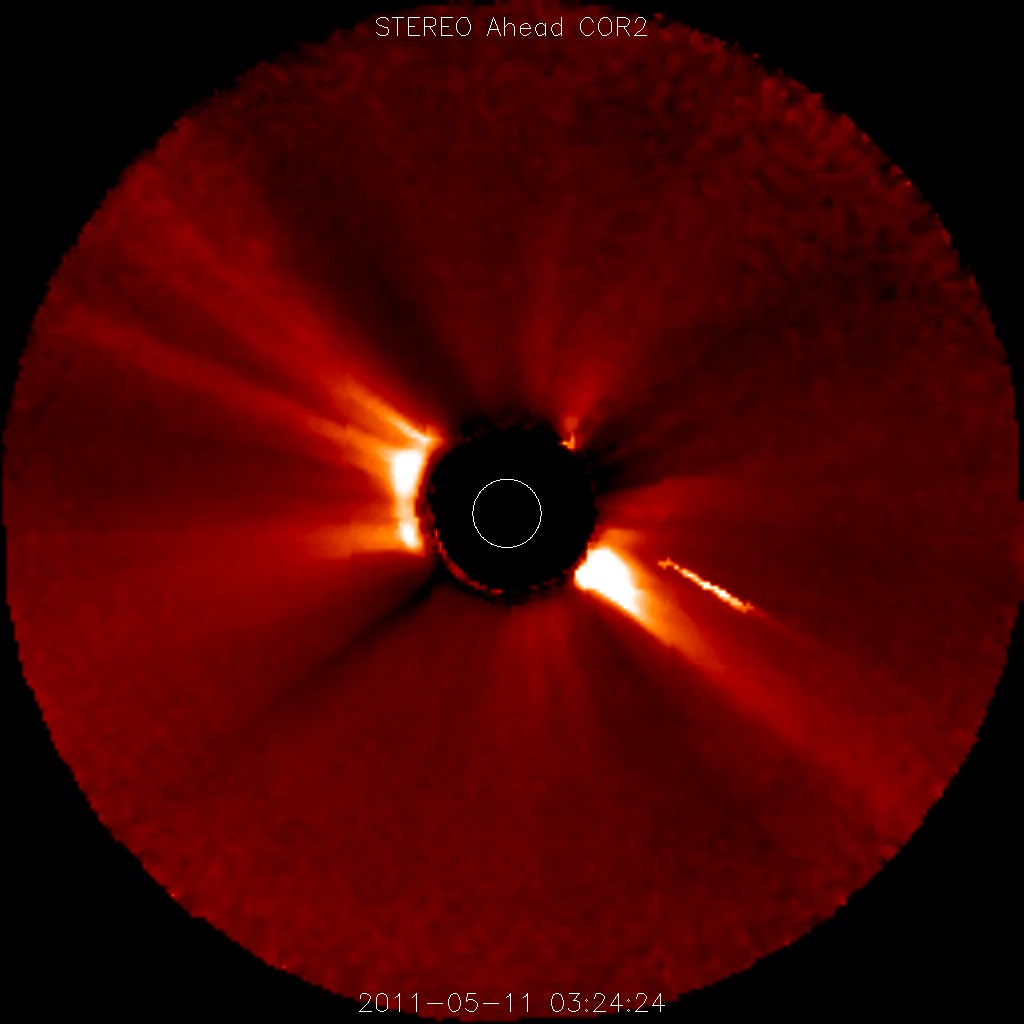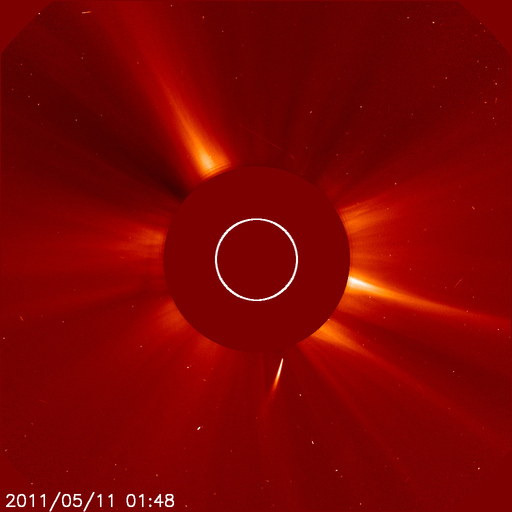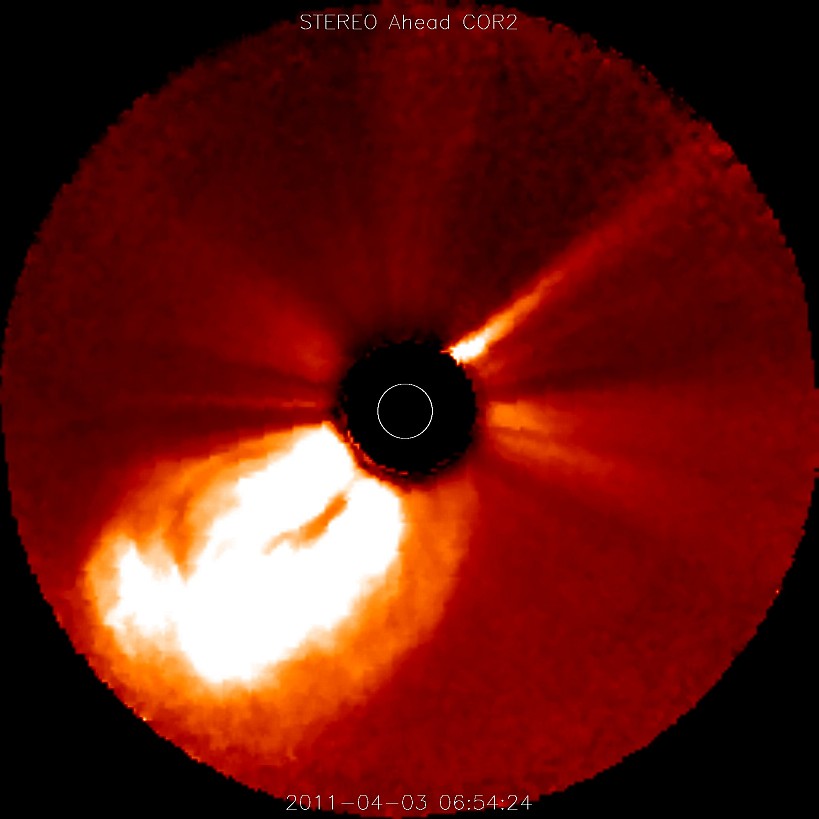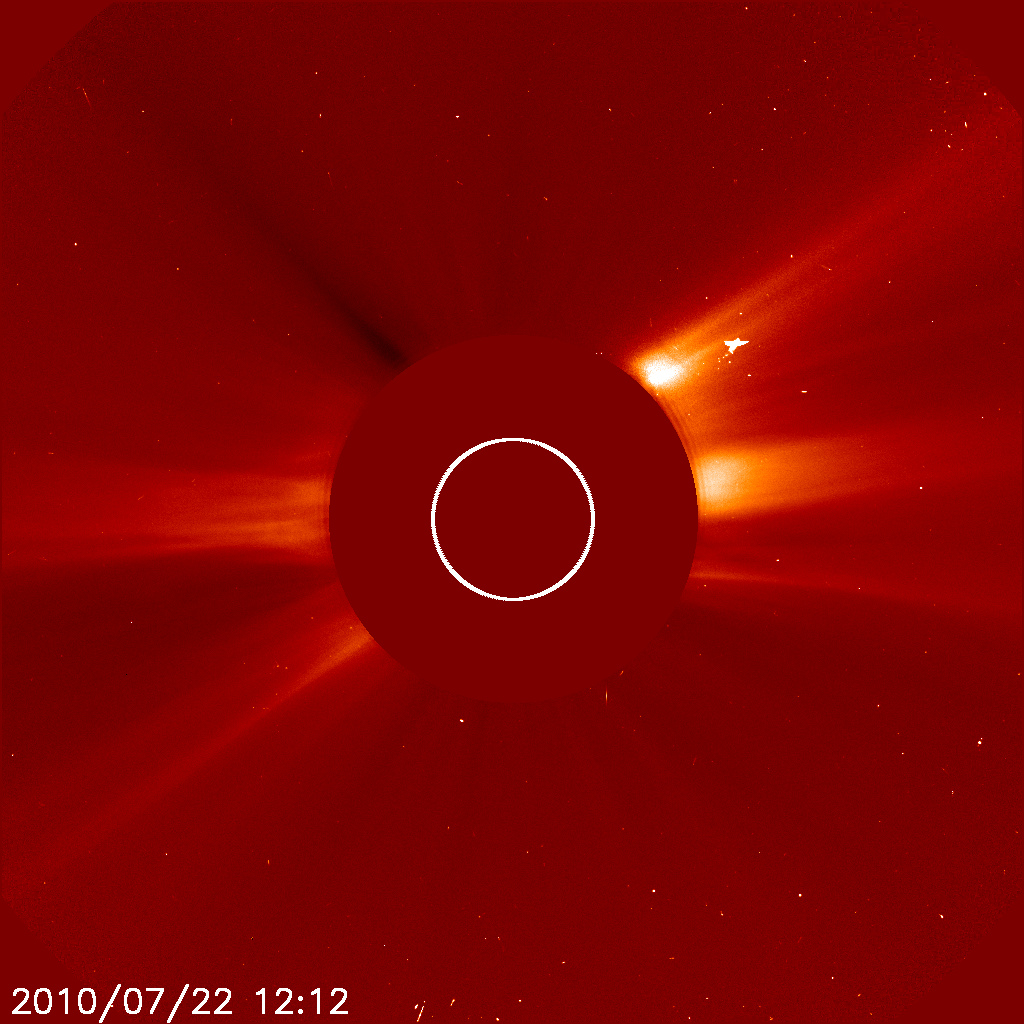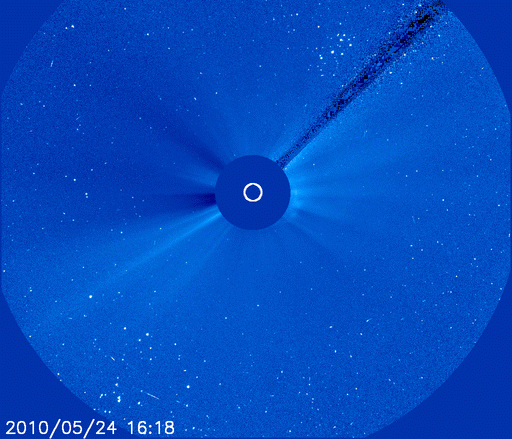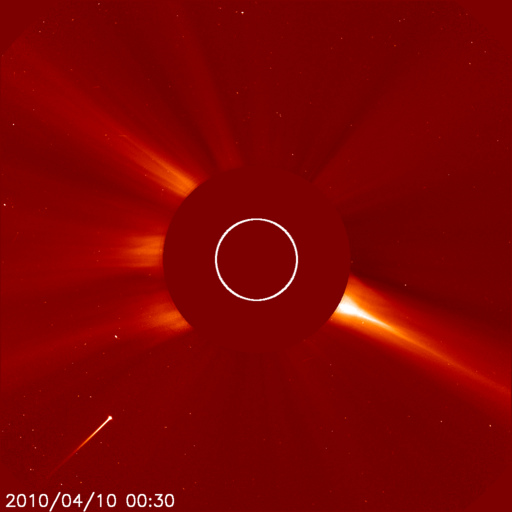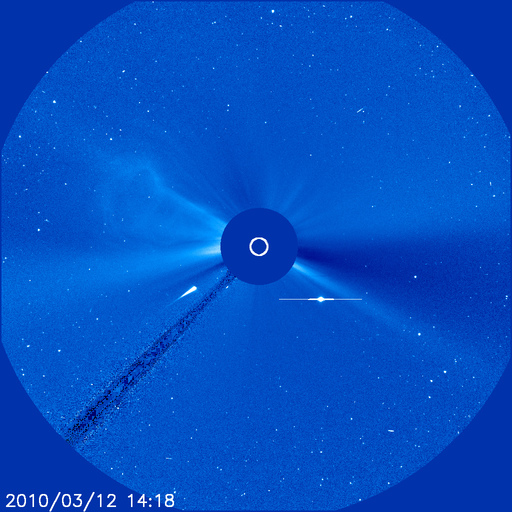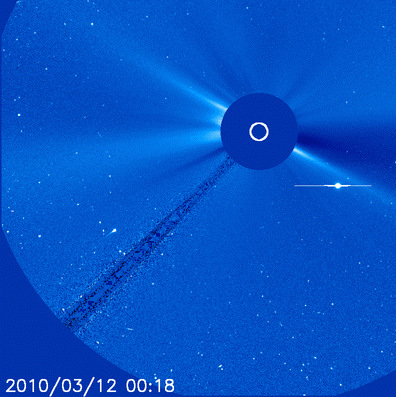A comet-like body of significant brilliance apparently struck the sun yesterday. We
alerted our readers to the impending impact several hours before it occurred.
As the body, assumed to be a Kreutz sungrazer comet, plunged towards the sun, most observers switched to the STEREO Ahead COR1 and STEREO Ahead COR2 satellite imagers.
NASA’s STEREO consists of two virtually identical observatories orbiting the sun in different positions, one leading the earth in its orbit and one trailing our planet, to provide stereoscopic views of solar weather. NASA launched STEREO so that it can keep an eye on solar weather, particularly Coronal Mass Ejections (CMEs), which have known destructive potential for orbiting satellites and even earthbound electrical systems.
The COR1 imagers were desirable for watching the comet strike because they have relatively small occlusion disks allowing observation of the inbound body to within about 150,000 miles of the turbulent solar “surface” composed of hot plasma. Images are normally uploaded to NASA’s STEREO website at five minute intervals and can be stitched together to construct a movie of solar events.
For example, to see the last movie from STEREO Ahead COR1, visit http://stereo-ssc.nascom.nasa.gov/cgi-bin/images, select “Ahead COR1”, boost the resolution to 512×512, click “Slideshow” and then depress the “Search” button. Leaving the dates blank will pull up the latest images. Using the date range 20100310 – 20100313 will provide all recorded images for the two impacts that occurred yesterday.
Indeed, as the doomed comet hurtled towards its fiery fate, Ahead COR1 provided several unmatched images until NASA stopped updating Ahead COR1 data immediately after impact where a bright streak can be seen leaving the sun at an odd angle. In fact, the update frequency of Ahead COR1 had already been throttled down from once every five minutes to once every hour with an eight hour gap preceding the appearance of the comet in the imager. The following sequence of photographs constitute those most temporally local to the comet impact event.

This is the first Ahead COR1 image of the comet.
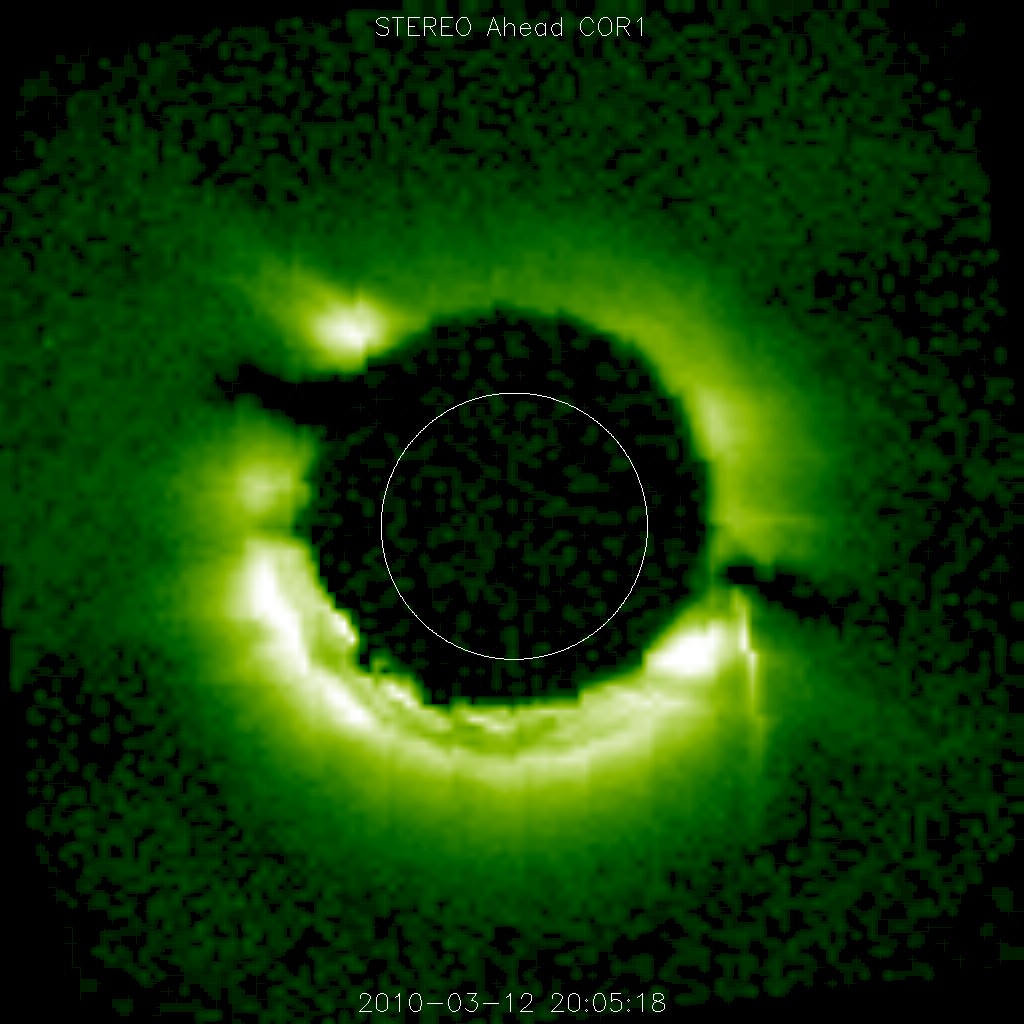
t-minus-2 frames to impact
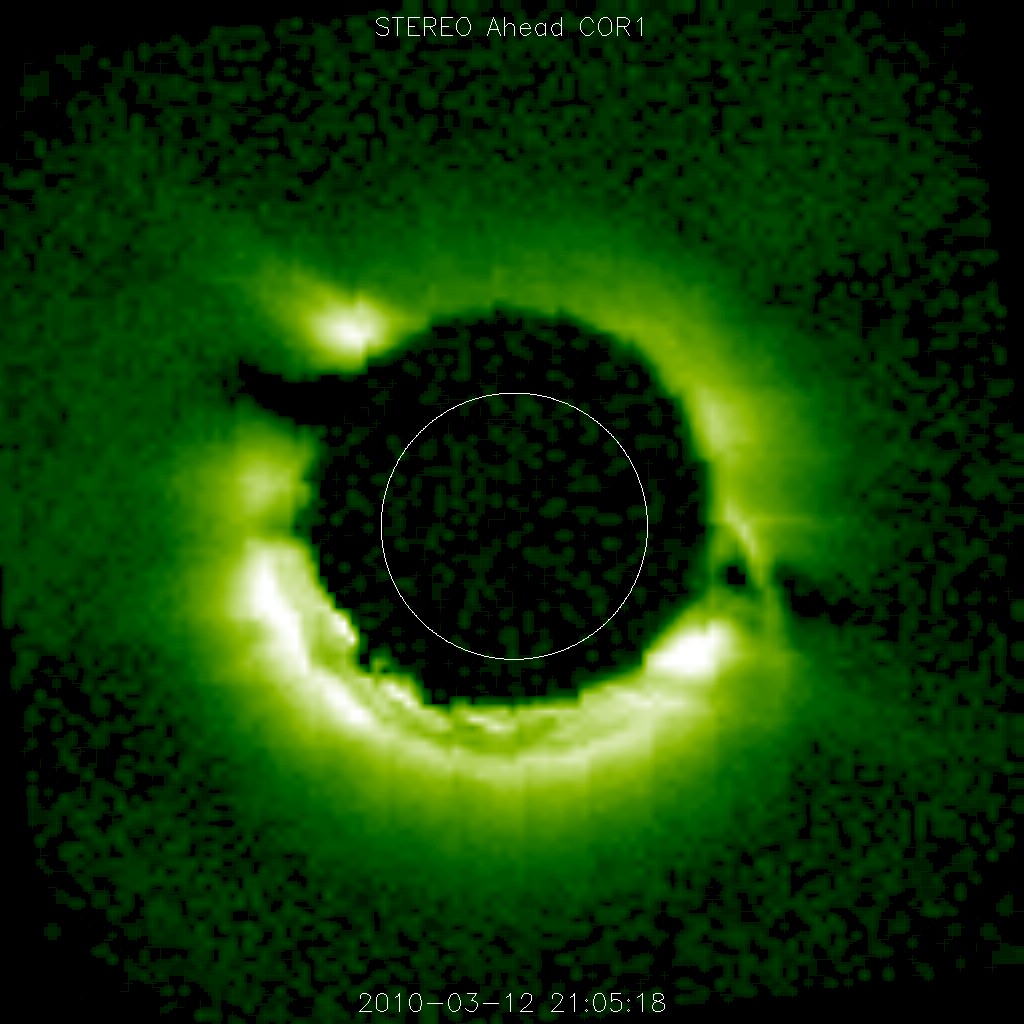
This is the last image of the comet before it passes behind the occulter.
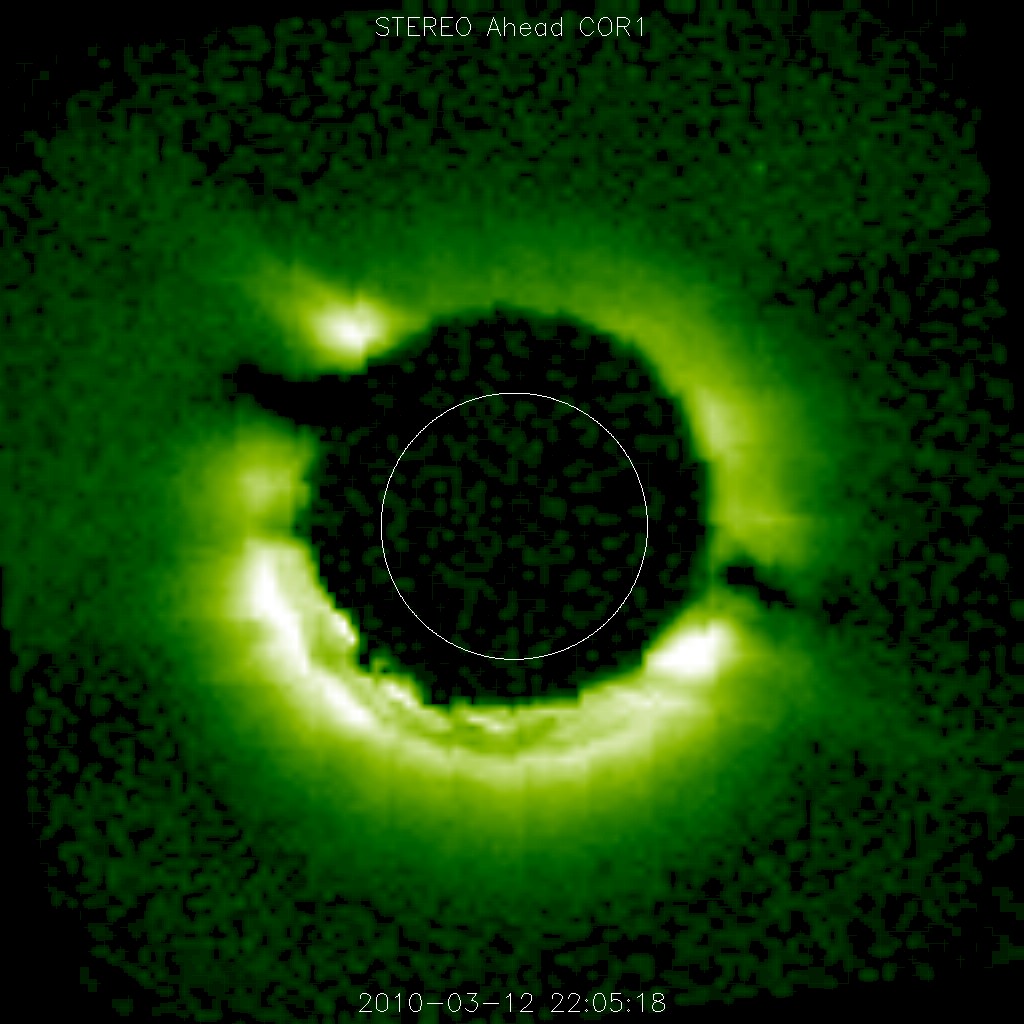
The comet has disappeared behind the occulter in this frame.
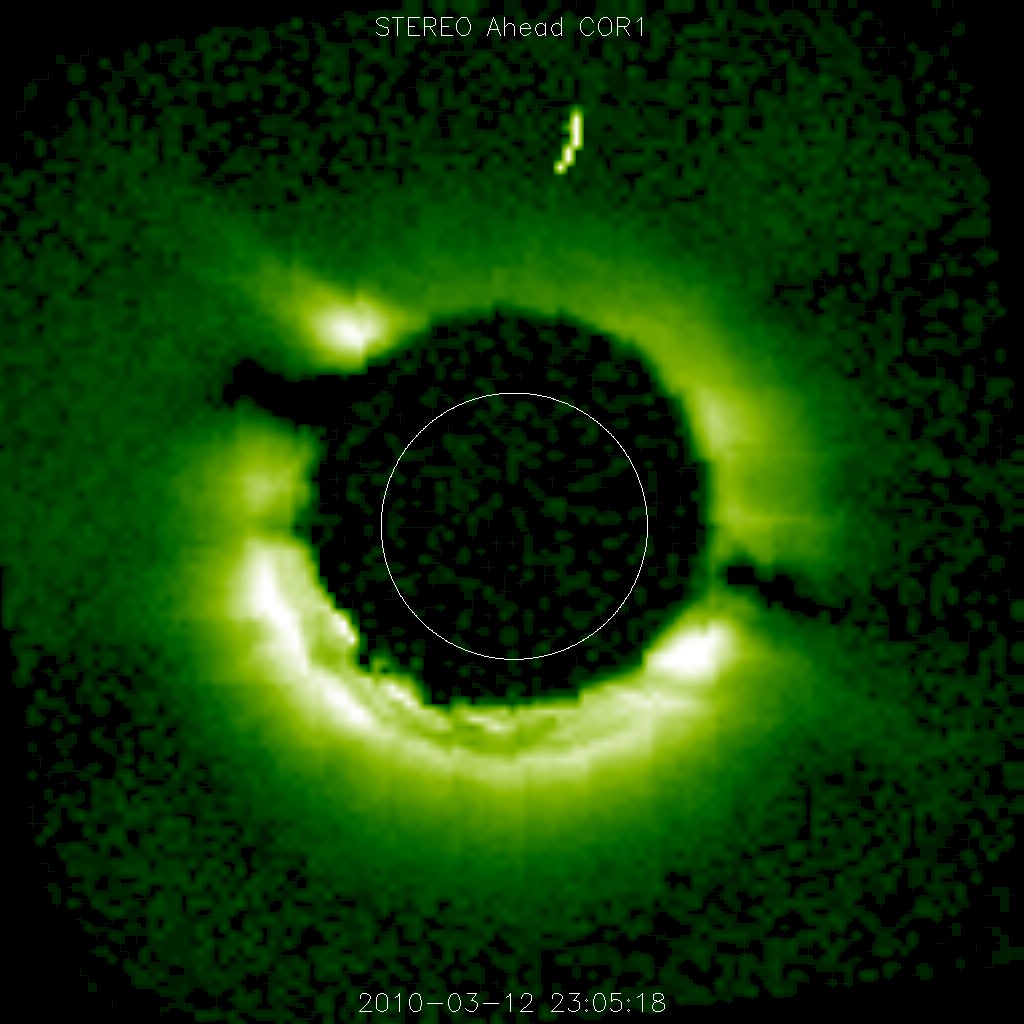
A strange, bright streak can be seen apparently emanating from the sun. This is the last hourly update.
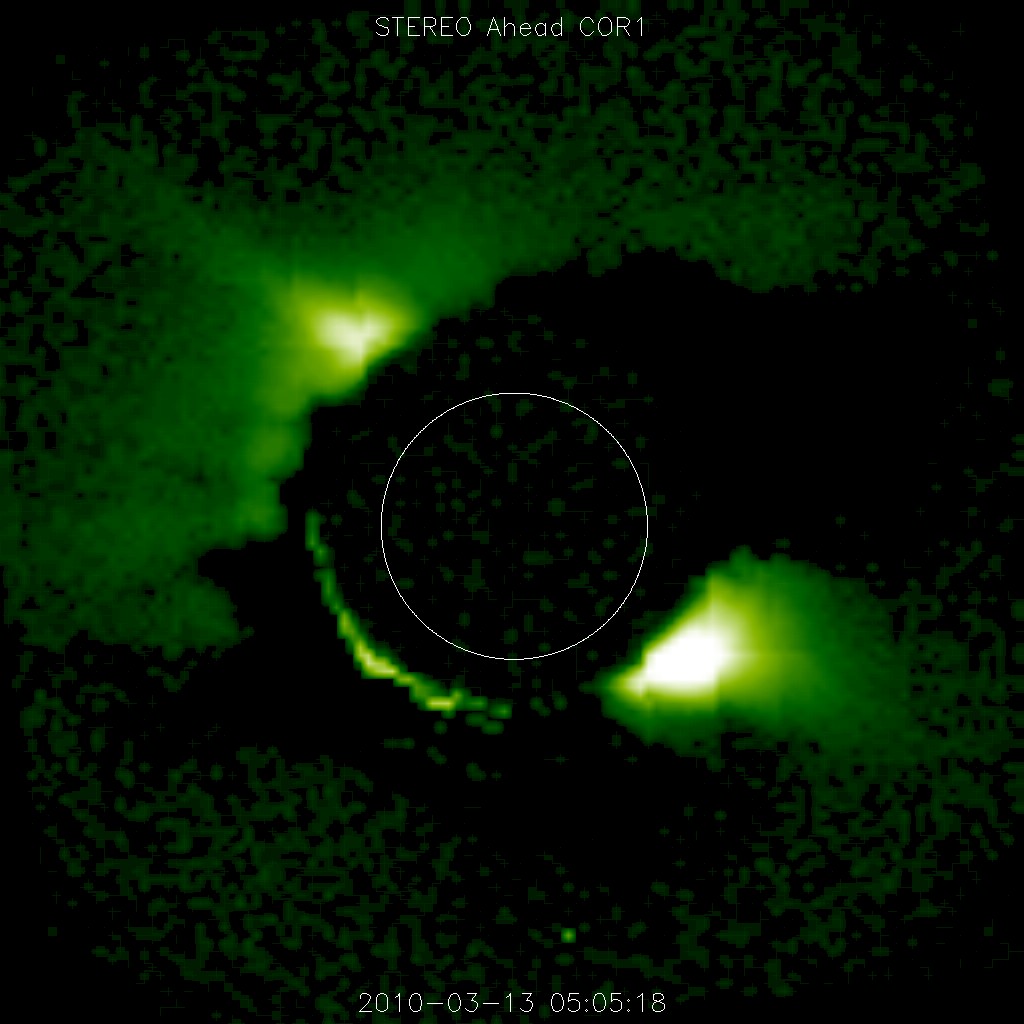
What is the cause of the lost data? Is it yet another demonstration of government incompetence? Or is this a continuing example of our government deciding to play our nanny, spoon-feeding us only the information they think we can handle?
In either case, NASA, if the data is available then make it available. And next time don’t drop the ball again.

